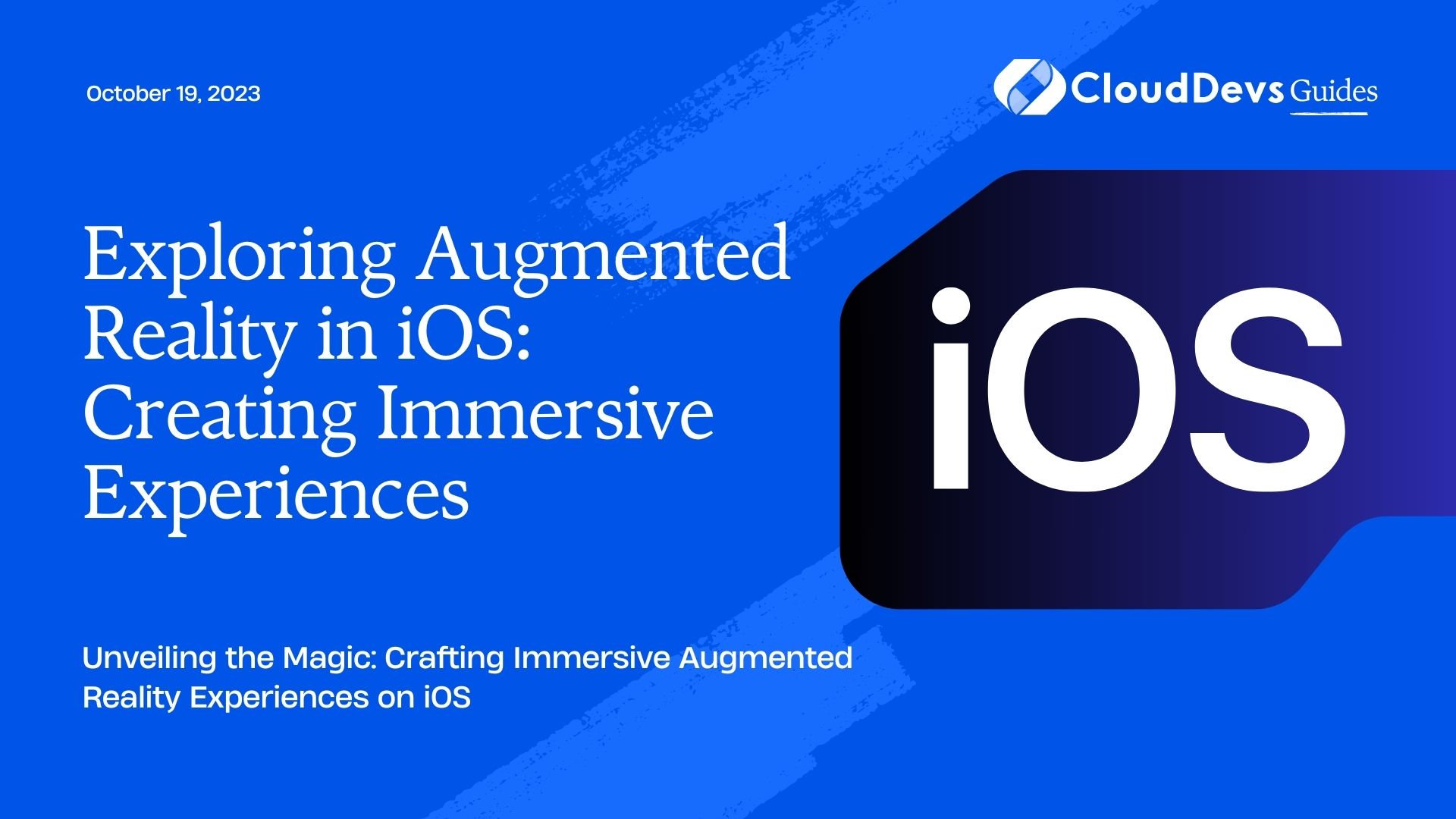Exploring Augmented Reality in iOS: Creating Immersive Experiences
In recent years, Augmented Reality (AR) has transformed from a futuristic concept to a tangible and accessible technology, enhancing our interactions with the digital world. With the release of ARKit by Apple, iOS developers have been empowered to create immersive and captivating experiences that blend the virtual and real worlds seamlessly. In this blog, we will take a deep dive into the world of Augmented Reality on iOS, exploring its fundamentals, tools, and how to craft your own immersive AR experiences. Whether you’re a beginner or an experienced developer, this guide will provide valuable insights and practical examples to get you started on your AR journey.
1. Understanding Augmented Reality
1.1 Defining Augmented Reality
Augmented Reality, often abbreviated as AR, is a technology that overlays digital content, such as images, videos, or 3D models, onto the real-world environment. Unlike Virtual Reality (VR), which immerses users in a completely simulated environment, AR enhances the existing reality by blending virtual elements seamlessly into it. This opens up a wide range of possibilities, from interactive games and educational tools to practical applications in fields like architecture, retail, and healthcare.
1.2 ARKit: Apple’s AR Framework
Apple’s ARKit is a powerful framework that enables developers to create AR experiences tailored specifically for iOS devices. ARKit provides a suite of tools and technologies that simplify the process of building AR apps. It takes care of complex tasks such as motion tracking, scene understanding, and lighting estimation, allowing developers to focus on creating engaging content.
2. Getting Started with ARKit
2.1 Setting Up Your Project
To start building immersive AR experiences on iOS, you’ll need Xcode, Apple’s integrated development environment. Create a new project and make sure to select the “Augmented Reality App” template. This will set up the essential ARKit components for your project.
2.2 Understanding the ARSession
At the core of every ARKit application is the ARSession. This session manages the device’s camera and motion data, allowing you to seamlessly integrate virtual content with the real world. It’s responsible for tracking the device’s movement and maintaining the AR experience’s state.
swift import ARKit let arSession = ARSession()
2.3 Adding Virtual Content
To augment the real world with digital content, you’ll need to add 3D models, images, or animations to your scene. ARKit provides anchor points, which are positions and orientations in the real world where virtual content can be placed.
swift let virtualObject = SCNNode() // Set the position and orientation of the virtual object arSession.add(anchor: ARAnchor(transform: simdTransform))
3. Building Immersive AR Experiences
3.1 Plane Detection
ARKit’s plane detection feature allows your app to identify horizontal surfaces, such as floors and tables, in the user’s environment. This is particularly useful for placing virtual objects realistically on the ground.
swift
func renderer(_ renderer: SCNSceneRenderer, didAdd node: SCNNode, for anchor: ARAnchor) {
if let planeAnchor = anchor as? ARPlaneAnchor {
// Create a plane node and add it to the scene
let planeNode = createPlaneNode(anchor: planeAnchor)
node.addChildNode(planeNode)
}
}
3.2 Interaction and Gestures
Creating interactive AR experiences involves handling gestures and user input. You can implement gesture recognizers to enable actions like tapping, pinching, and rotating virtual objects.
swift
@objc func handleTap(_ gesture: UITapGestureRecognizer) {
let location = gesture.location(in: arView)
// Perform hit test to find objects in the scene
if let hitTestResult = arView.hitTest(location, options: nil).first {
// Handle object selection or interaction
}
}
3.3 Lighting and Realism
Realism is key to creating immersive AR experiences. ARKit automatically estimates the environment’s lighting conditions and adjusts the virtual content’s lighting accordingly. You can enhance this by adding lighting sources and materials to your virtual objects.
swift let directionalLight = SCNLight() directionalLight.type = .directional let lightNode = SCNNode() lightNode.light = directionalLight lightNode.eulerAngles = SCNVector3(-Float.pi / 4, 0, 0) // Set light direction sceneView.scene.rootNode.addChildNode(lightNode)
4. Future Directions and Possibilities
4.1 Spatial Mapping
ARKit is continuously evolving, and upcoming versions might introduce features like spatial mapping. This would allow apps to create more advanced interactions, like occlusion, where virtual objects appear to be hidden behind real-world objects.
4.2 Multi-User Experiences
Collaborative AR experiences hold immense potential. Imagine users in different locations interacting with the same virtual objects simultaneously, fostering new ways of communication and cooperation.
Conclusion
Augmented Reality is a revolutionary technology that has opened up endless possibilities for iOS app developers. With the power of ARKit, creating immersive experiences that seamlessly blend the real and virtual worlds has never been easier. From understanding the fundamentals of AR to building interactive experiences, this blog has provided you with a solid foundation to embark on your AR journey. Whether you’re crafting games, educational apps, or practical solutions for various industries, AR has the potential to reshape the way we interact with digital content. So, harness the power of Augmented Reality, and start building the future today.
Table of Contents









